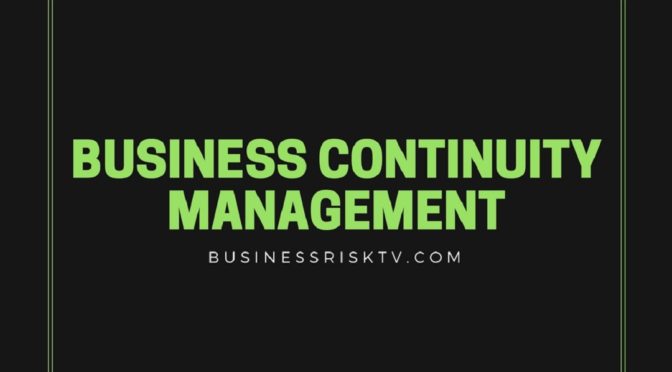How do business leaders inform their continuity risk management planning
Business Continuity Expert Magazine. Build business resilience. Business recovery experts and business continuity experts free business briefings and Business Health Checks. Continuity risk management solutions reviewed. Are you a business continuity expert who wants to promote your service? Business recover experts can do so here. Promote your continuity risk management solutions. Learn more about business continuity management BCM. Work with business continuity management experts to protect your business better. Read watch and write business continuity management news and reviews. Discover better ways of staying in business for longer with BusinessRiskTV.
Benefits Of BCM Methodology
Benefits of business continuity management methodology for a business
Secure Your Business Future: The Strategic Benefits of Business Continuity Management Methodology
In today’s fast-paced and ever-changing business environment, it’s more important than ever for companies to be prepared for unexpected disruptions. Business continuity management (BCM) methodology is a proactive approach to managing risks and ensuring that a business can continue to operate in the face of unexpected events.
Here are some of the benefits of implementing a BCM methodology in your business:
- Minimising Downtime: Downtime can be extremely costly for a business. With a BCM methodology in place, businesses can quickly respond to disruptions and minimise the amount of time that operations are down. This can help to reduce lost revenue and maintain customer confidence.
- Protecting Your Reputation: A major disruption can damage a company’s reputation and erode customer trust. By having a BCM methodology in place, businesses can demonstrate that they take risk management seriously and are committed to protecting their customers and stakeholders.
- Maintaining Compliance: Many industries have regulatory requirements around business continuity planning. Implementing a BCM methodology can help businesses to ensure that they are meeting these requirements and avoiding potential penalties or fines.
- Improving Resilience: By identifying potential risks and developing plans to mitigate them, businesses can improve their resilience and ability to respond to unexpected events. This can help to minimize the impact of disruptions and keep operations running smoothly.
- Enabling Better Decision Making: With a BCM methodology in place, businesses can make more informed decisions about risk management and resource allocation. This can help to ensure that the business is better prepared for unexpected events and can respond more effectively when they occur.
- Supporting Business Growth: By implementing a BCM methodology, businesses can demonstrate to customers and stakeholders that they are prepared for unexpected events and can be relied upon to deliver consistent service. This can help to build trust and support business growth over the long term.
- Improving Communication: Effective communication is essential during a disruption. By having a BCM methodology in place, businesses can establish clear lines of communication and ensure that key stakeholders are informed and updated throughout the disruption.
Implementing a BCM methodology can bring numerous benefits to a business. It can help to minimise downtime, protect reputation, maintain compliance, improve resilience, enable better decision making, support business growth, and improve communication. By investing in business continuity planning, businesses can better prepare for unexpected events and ensure that they are able to continue operating even in the face of disruptions.
Business Recovery Experts

Enter code #ContinuityRiskManagementSolutions

You will find related risk management articles and videos to develop your risk knowledge and business intelligence to improve your business decision making process
Subscribe to business continuity management experts for free alerts bulletins and reviews from business continuity magazine

Common Mistakes In Recovery
Most common mistakes business leaders make when trying to recover from a major loss or incident
When a business experiences a major loss or incident, such as a natural disaster, cyber attack, or financial crisis, it can be a challenging and overwhelming time for business leaders. In an effort to recover and get back on track, leaders often make mistakes that can hinder their progress and even cause further damage to their business. Here are some of the most common mistakes business leaders make when trying to recover from a major loss or incident:
- Failing to Have a Plan in Place
One of the most significant mistakes that business leaders make is failing to have a comprehensive plan in place to address potential loss or incidents. A crisis plan can help leaders respond effectively and efficiently during a time of crisis. This plan should include steps for communication, risk mitigation, and continuity of operations. Without a plan, leaders may be forced to make reactive decisions that can exacerbate the situation.
- Not Communicating Effectively
During a crisis, clear and timely communication is critical. Business leaders must communicate with their employees, customers, vendors, and other stakeholders to keep them informed about the situation and any changes in operations. Failure to communicate effectively can lead to confusion and uncertainty, damaging the reputation of the business.
- Focusing Too Much on Short-Term Goals
When a business experiences a major loss or incident, leaders may feel pressure to make quick decisions to get the business back on track as soon as possible. However, focusing too much on short-term goals can lead to long-term problems. Leaders should take the time to assess the situation and develop a strategic plan that considers both short-term and long-term goals.
- Neglecting Employee Needs
In the aftermath of a crisis, employees may be dealing with a range of emotions and may require support from their employer. Neglecting employee needs can lead to decreased morale, decreased productivity, and increased turnover. Leaders should prioritise employee well-being and provide the necessary resources and support to help employees cope with the situation.
- Failing to Learn from the Experience
After a crisis has been resolved, it’s important for leaders to take the time to reflect and learn from the experience. Failure to do so can lead to repeated mistakes and the inability to prevent future crises. Leaders should evaluate their crisis plan, identify areas for improvement, and make necessary changes to prevent similar incidents from occurring in the future.
Recovering from a major loss or incident is a challenging time for any business. However, by avoiding these common mistakes, business leaders can increase their chances of success and move forward with a stronger and more resilient organisation. Effective crisis management requires clear communication, strategic planning, and a commitment to learning from the experience.
Business Continuity Management News
13 September 2022 – It’s been reported in Axios that Peiter Zatko, Twitter’s former head of security, alleges Twitter lacks recovery plans if its data centres go down.

27 July 2022 – Reckitt Benckiser, maker of Dettol cleaning products and Durex condoms, has contingency plans in place to keep a major European facility from shutting down if energy to the continent is cut off, the company’s chief executive told Reuters.
Top bosses at energy companies have urged individuals and businesses to reduce power use, and put in place contingency plans so they are less reliant on gas imports.
“We’re a big consumer of renewable power across all European facilities. Secondly, where we have gas, we actually have boilers that are oil and gas, so we can flip,” CEO Laxman Narasimhan said in an interview, speaking about a major factory in Europe that he declined to name.
“In the UK and so on we’re actually quite well set, we have no issue or challenge. It’s more in continental Europe…that’s the one we have contingency on,” Narasimhan said, speaking after Reckitt reported first-half earnings results that handily beat market sales expectations.

Returning to business as normal will not be possible until a vaccine is found
Rolling out an effective vaccine is months away at least. Business as normal will never return. Getting back to business is however very real for most businesses in the UK.
What will doing business look like for you? The way to know what your future looks like is to shape it yourself. What happens next for your business?
There will remain things you cannot control. Is that not just as it has always been? The problems to overcome maybe different as may the solutions but controlling the risks is what managers are paid to do.
Getting the pandemic risk into perspective for your particular business is critical. The risks will evolve. Where your industry or geographical area is may dictate how your business operates.
How you respond maybe key to your business survival and prosperity not the prevalence of the virus in society. BusinessRiskTV can help to get your business back up and running safely securely and profitably. Now is the time to put in place actions to push your business forward regardless of the business environment.
You can influence what business will look like in future for you. Rebuild your business from the disaster of the coronavirus pandemic. It is currently unlikely that you will catch the coronavirus in the UK.
Much fewer than 1 person in every 2000 you meet in business will have the virus.
It is time to move on from business resilience through lockdown to business recovery.
Are you interested in business continuity management news? Could your business continuity management be improved?
Understanding business continuity and disaster recovery process. How to the best leaders manage catastrophic risk. Associate yourself with your peers around the world and experts in business continuity management.
Business continuity management experts help you analyse your enterprise risks to assess how vulnerable your business is.
BusinessRiskTV will help you reduce risks and improve sustainability. Design and embed a more effective risk management strategy to build your business resilience with our business continuity management experts.
Our business continuity management experts will save you time and money. You could introduce your own BCM plan on your own and after many tests or BCM exercises arrive at one that may work for you. Alternatively you could contact our business continuity management experts who will reduce your tail and error process of producing an effective BCM plan. They are experts at getting a BCM plan in place and a conversation with them could save you a lot of money time and stress.

Business Continuity Experts
Ask your peers and stop reinventing the business continuity management wheel. Do not try to solve problems that have already been solved.
Value of ISO 22301
ISO 22301 is an international standard that outlines the requirements for a business continuity management system (BCMS). A BCMS is a framework that enables organizations to identify potential threats and risks to their business, develop plans to mitigate those risks, and ensure that they can continue to operate in the event of a disruption. The standard provides a systematic approach to managing disruptions and improving resilience, which is becoming increasingly important in today’s volatile business environment. In this article, we will discuss the value of ISO 22301 for business leaders who are considering implementing a BCMS.
The Benefits of ISO 22301
- Risk Management
ISO 22301 provides a structured approach to risk management, which enables organisations to identify and assess the risks they face. By doing so, they can develop appropriate mitigation strategies and ensure that they are prepared for potential disruptions.
- Continuity of Operations
ISO 22301 ensures the continuity of operations during a disruption by providing guidelines for developing and implementing business continuity plans. These plans ensure that the organisation can continue to operate even in the face of a disruption, minimising the impact on customers, suppliers, and employees.
- Compliance
ISO 22301 is an internationally recognized standard that provides a framework for compliance with legal, regulatory, and contractual requirements. By implementing the standard, organisations can demonstrate their commitment to maintaining the highest levels of business continuity and resilience.
- Reputation
ISO 22301 certification can enhance an organization’s reputation by demonstrating to stakeholders that the organization takes business continuity and resilience seriously. This can improve the organisation’s brand image and increase customer and stakeholder confidence.
- Cost Savings
ISO 22301 can help organisations save money by reducing the impact of disruptions on operations. By identifying potential risks and implementing mitigation strategies, organisations can reduce the likelihood and impact of disruptions, which can save money in the long run.
Implementing ISO 22301
To implement ISO 22301, organisations must first establish a BCMS. This involves identifying critical business processes and systems, assessing the risks they face, and developing appropriate mitigation strategies. Organisations must also develop and implement business continuity plans, which outline the steps that should be taken in the event of a disruption.
Once the BCMS is established, organizations can seek certification to ISO 22301. This involves an independent audit by a third-party certification body, which verifies that the organisation’s BCMS meets the requirements of the standard.
ISO 22301 provides a structured approach to managing disruptions and improving resilience, which is becoming increasingly important in today’s volatile business environment. The standard provides a framework for identifying potential risks, developing mitigation strategies, and ensuring continuity of operations in the face of disruptions. By implementing ISO 22301, organisations can improve their resilience, enhance their reputation, and save money in the long run.
Feature: Business Opportunity Can Arise From Disasters
A catastrophic risk event can create opportunity for business growth.
If your business was to suffer a major risk event like a fire or serious flood this gives you the opportunity to bring forward plans you have for modernisation. It could allow you to introduce business change earlier than planned. You could benefit from the major incident in the long-term with new up to date factory equipment or systems of working. Your building layout could be re-arranged to make the production process flow faster and more efficiently. You could even relocate your business to a new site that is more conducive to meeting the needs of your customers. Whilst nobody is wishing they have a fire if you have one you should take advantage of that opportunity for faster business growth in future.
What is a famine for one business could be a feast for another
BusinessRiskTV
A disaster for one business could be the opportunity another business could use to massively increase business growth. It is difficult to plan for a major disastrous event but business continuity management provides that opportunity to think of the bigger picture in terms of maximising opportunities not just mitigating the downside of the catastrophe. For example Ashtead plant hire have received a massive boost to turnover and overall business value due to the storms and hurricanes in America. People and businesses dealing with the aftermath of hurricanes and storms needed plant and equipment. Ashteads core business is hiring out plant and equipment to businesses and people. Ashteads turnover and share price has risen on the back of the disasters that befell others. Ashtead didn’t want people to suffer major losses due to storms and hurricanes in USA but their business model has benefited massively from it. Thinking the bigger picture means thinking about how the business can take advantage of all opportunities not just those from normal operating conditions.
Note Ashtead Group moved £200 million worth of plant and equipment into the affected areas damaged by hurricanes Harvey and Irma that destroyed many parts of Texas and Florida. The people and businesses needed such plant and equipment so Ashtead were providing a valuable service. However this seizing of the opportunity by moving more assets into the affected areas has contributed to particularly strong trading in the last six months. The exact benefit of the hurricanes is difficult to quantify especially as Ashteads own assets were damaged in the hurricanes but there was substantial increased demand for Ashteads equipment and most probably at higher hire rates.
Business Continuity Magazine

What’s the latest news and opinions about good and bad business continuity management? Want to have your say? Have you design a great new product or service to help enterprise leaders? What standard are you working to?
Many people have good tips to stop you falling down the same hole they did and are happy to share ideas, knowledge and experiences.
Others want to promote and market their business offering, to ensure more people know where to go for a solution to their problem.
Want to have your say on business recovery and business continuity?

Become Business Continuity Management Citizen Journalist. Reach more people with your views on business continuity management with BusinessRiskTV.
BusinessRiskTV Business Continuity Experts
Subscribe to BusinessRiskTV Business Continuity Risk Experts. BusinessRiskTV and its business partners will contact you regarding business continuity management news best practice reviews events workshops webinars.
- Want to list your business continuity management business in our online risk experts network directory?
- Are you running in deals discounts or special offers in connection with your business continuity management products or services you want more people to know about?
- Could you write an advertorial to advertise your business continuity management related business and inform our readers?
Reach more new customers interested in business continuity management with BusinessRiskTV.

Promote and market your continuity risk management solutions on BusinessRiskTV for 12 months

Put your products or services in front of new people already interested in your type of business offering before your competitors do.
Link into your existing online sales process direct from BusinessRiskTV or use our eCommerce solutions to increase your sales cash flow and profit.
Increase the sources of your revenue streams more sustainably. Grow your business continuity management related business faster with BusinessRiskTV.
BusinessRiskTV Business Continuity Management Training Courses

Learn how to identify potential significant impacts that threaten your organisation and build your own business continuity management framework for strong business resilience and longer business sustainability.
Senior managers executives and risk managers can not prevent many risk factors severely and perhaps catastrophically impacting on their business 100 percent of the time. Terrorist attacks extreme weather social and political instability technology risks supply chain failures or other threats could destroy a business or make it very time consuming to fully recover.
Preparing for what could previously have been described as Black Swan events or severe losses is not easy. What you prepare to do has to work well on the rare occasion that the risk event does occur and impacts on your business. To prepare for the the management of and recovery from major risk event is often difficult to do as business priorities often swamp your diary. However not preparing for major incidents could be fatal or at least very costly.
Our business continuity management discussions workshops and training courses can be accessed online via your smartphone tablet pc or even your TV. Wherever you are in the world you can attend our business continuity management knowledge development opportunities. Doing so may help you survive when your competitors do not. This could be an opportunity to grow exponentially but you need to be prepared to seize the opportunity.
We offer a mixture of theoretical knowledge webinars and practical interactive business continuity management exercises. They are all designed to give all participants skills and capabilities to improve your organisations preparedness for significant loss management and survival.
| Academy | Marketplaces |
| Exhibitions | Risk Magazine |
5 Day Introductory Training On Business Continuity For Leaders
Sign up for our 5 day introductory training plan on business continuity for leaders:
| Day | Topic | Objectives | Activities |
|---|---|---|---|
| 1 | Introduction to Business Continuity Management | Understand the key concepts of business continuity management (BCM) | Lecture and discussion on the importance of BCM, its benefits, and its impact on the organization |
| 2 | ISO 22301 Overview | Understand the requirements of ISO 22301 | Lecture and discussion on the key elements of ISO 22301 and its role in BCM |
| 3 | Risk Assessment and Business Impact Analysis | Understand the process of conducting risk assessment and business impact analysis (BIA) | Lecture and discussion on the importance of risk assessment and BIA in BCM, and hands-on exercise on conducting a risk assessment and BIA |
| 4 | Business Continuity Planning | Understand the process of developing a business continuity plan (BCP) | Lecture and discussion on the key elements of a BCP, hands-on exercise on developing a BCP, and review of sample BCPs |
| 5 | Crisis Management | Understand the process of crisis management and communication | Lecture and discussion on the importance of crisis management and communication in BCM, hands-on exercise on developing a crisis management plan, and review of sample crisis management plans |
This training plan provides a comprehensive introduction to the key concepts, standards, and processes of business continuity management, and includes hands-on exercises and review of sample plans to enhance participants’ understanding and practical skills.
More articles videos and money saving tips on business continuity disaster and crisis management
BC Standards and Best Practices
Best practices and international standards for business continuity
Business continuity is the ability of an organisation to continue providing critical services and operations during and after a disruptive event. The following are some of the best practices and international standards for business continuity:
- ISO 22301: This is an international standard that outlines the requirements for a business continuity management system (BCMS). It provides a framework for organisations to establish, implement, maintain, and continually improve their BCMS.
- Business Impact Analysis (BIA): This is a process of identifying critical business processes and systems, and determining the impact of their disruption on the organisation. It helps organisations prioritise their recovery efforts and allocate resources accordingly.
- Risk Assessment: This involves identifying potential threats and risks to the organisation and evaluating their likelihood and impact. It helps organizations develop appropriate risk mitigation strategies.
- Crisis Management: This involves developing a plan to respond to and manage a crisis. It includes establishing a crisis management team, defining roles and responsibilities, and conducting regular training and drills.
- Communication Plan: This involves developing a plan to communicate with stakeholders during and after a disruptive event. It includes identifying key stakeholders, establishing communication channels, and developing key messages.
- Regular Testing and Review: It is essential to regularly test and review the BCMS to ensure it remains effective and up to date. This includes conducting regular exercises and simulations, as well as updating the BCMS based on changes in the organisation’s operations, processes, or environment.
Overall, the best practice and international standards for business continuity emphasise the importance of developing a comprehensive and integrated approach to managing disruptions and ensuring the resilience of an organisation.
Key points of iso 22301
ISO 22301 is an international standard that provides a framework for establishing, implementing, maintaining, and continually improving a business continuity management system (BCMS) in an organisation. The key points of ISO 22301 are:
- Context of the organisation: The standard emphasises the need for organisations to understand their context, including internal and external factors that may impact their ability to provide critical services and operations.
- Leadership and commitment: Top management is responsible for ensuring the effectiveness of the BCMS and providing the necessary resources and support for its implementation and maintenance.
- Planning: The organisation must identify its critical processes and systems, assess the risks and impacts of potential disruptions, and develop a business continuity plan to ensure the continuity of critical services and operations.
- Support: The organisation must provide the necessary resources, infrastructure, and communication channels to support the BCMS.
- Operation: The organisation must implement and maintain the BCMS, including establishing and maintaining a crisis management team, conducting regular exercises and simulations, and maintaining documentation.
- Performance evaluation: The organisation must monitor and measure the performance of the BCMS and continually improve its effectiveness.
- Improvement: The organiation must take corrective actions to address non-conformities and continually improve the BCMS based on changes in the organisation’s operations, processes, or environment.
Overall, ISO 22301 provides a systematic and structured approach to managing disruptions and ensuring the resilience of an organization. It emphasises the importance of top management leadership and commitment, risk assessment and management, and regular testing and review of the BCMS.
Business Continuity Defined
ISO 22301 defines Business Continuity as the capability of an organization to continue delivery of products or services at pre-defined acceptable levels following a disruptive incident. A Business Continuity Management System (BCMS) is a management framework that enables an organization to identify potential threats to its business continuity, assess their impact, and develop and implement strategies to minimize the impact of a disruption and ensure the continuity of critical business operations.
Business continuity planning involves a range of activities aimed at minimizing the impact of disruptions to an organization’s operations. These activities include:
- Business Impact Analysis (BIA): This is a process of identifying critical business processes and assessing the potential impact of a disruption to those processes.
- Risk Assessment: This involves identifying potential threats and assessing the likelihood and potential impact of those threats on an organization’s operations.
- Risk Mitigation: This involves developing and implementing strategies to minimize the impact of disruptions and ensure the continuity of critical business operations.
- Business Continuity Plan (BCP) Development: This involves developing and implementing a plan to enable the organization to continue its critical business operations during a disruption.
- Business Continuity Plan Testing: This involves testing and validating the business continuity plan to ensure that it is effective and can be implemented in a timely and efficient manner.
- Business Continuity Plan Maintenance: This involves updating and maintaining the business continuity plan to ensure that it remains current and effective in addressing new threats and changes in the organization’s operations.
Business continuity planning is essential for organizations to ensure their ability to operate during and after disruptive incidents. By identifying potential threats, assessing their impact, and developing and implementing effective strategies to minimize the impact of a disruption, organizations can ensure the continuity of their critical business operations and minimize the financial and reputational impacts of a disruption.
Disaster Recovery Defined
ISO 22301 defines disaster recovery as the process of restoring critical business functions and processes after a disruption or disaster. Disaster recovery is a key component of a Business Continuity Management System (BCMS), and it involves developing and implementing plans and procedures to restore critical business functions and processes in a timely and efficient manner.
The disaster recovery process in ISO 22301 typically involves the following steps:
- Activate the disaster recovery plan: This involves initiating the disaster recovery plan and activating the necessary resources and personnel to begin the recovery process.
- Restore critical business functions and processes: This involves restoring critical business functions and processes in a prioritized manner, based on the results of the business impact analysis (BIA).
- Test and validate the recovery: This involves testing and validating the recovery to ensure that critical business functions and processes are fully restored and functioning properly.
- Return to normal operations: Once critical business functions and processes have been fully restored, the organization can return to normal operations.
Disaster recovery is an essential component of a BCMS, as it enables organizations to recover from disruptions and minimize the impact of the disruption on their operations. By developing and implementing effective disaster recovery plans and procedures, organisations can ensure that they are able to resume critical business functions and processes in a timely and efficient manner, and minimize the financial and reputational impacts of a disruption.
A disaster recovery plan can apply to more than just IT. While disaster recovery planning is often associated with IT systems and data recovery, a comprehensive disaster recovery plan can cover a wide range of scenarios and business functions.
Disasters can include natural disasters such as floods, earthquakes, hurricanes, and wildfires, as well as human-made disasters such as cyberattacks, power outages, and terrorist attacks. A disaster recovery plan should include protocols and procedures for responding to a variety of potential disasters and ensuring that critical business functions can be restored as quickly as possible.
In addition to IT systems and data recovery, a disaster recovery plan may also cover areas such as communication protocols, employee safety, supply chain disruptions, and financial contingencies. The goal of a disaster recovery plan is to minimize the impact of a disaster on a business and enable it to recover and resume operations as quickly and efficiently as possible.
Risk Assessment Defined
ISO 22301 is an international standard that provides a framework for developing and implementing a business continuity management system (BCMS). The purpose of a BCMS is to help organizations prepare for and respond to unexpected disruptions, such as natural disasters, cyber-attacks, or other threats that may impact their ability to operate.
Applying risk assessment in the context of ISO 22301 involves identifying and evaluating potential threats to an organization’s business continuity, and assessing the likelihood and potential impact of those threats. This includes analyzing the organization’s internal and external environment, as well as its critical business processes and dependencies.
The risk assessment process in ISO 22301 typically involves the following steps:
- Identify the scope of the risk assessment
- Identify potential risks and hazards
- Assess the likelihood and impact of each risk
- Determine the level of risk and prioritize risks based on their significance
- Develop risk treatment plans to address identified risks
- Monitor and review risks on an ongoing basis
By applying risk assessment in the context of ISO 22301, organizations can identify and mitigate potential threats to their business continuity, and improve their ability to respond to unexpected disruptions.
Business Impact Analysis Defined
ISO 22301 defines Business Impact Analysis (BIA) as a process that identifies and evaluates the potential impacts of disruptions to critical business activities. BIA is an essential component of a Business Continuity Management System (BCMS) and is used to identify critical business processes and dependencies that are essential for the organization’s continued operation.
The BIA process in ISO 22301 typically involves the following steps:
- Identify critical business processes and functions: This involves identifying the processes and functions that are essential to the organization’s continued operation.
- Determine the potential impacts of disruptions: This involves assessing the potential consequences of disruptions to critical business processes, such as financial losses, reputational damage, and legal and regulatory compliance issues.
- Evaluate recovery time objectives (RTOs) and recovery point objectives (RPOs): RTOs and RPOs are used to determine the maximum allowable downtime and data loss for critical business processes.
- Identify dependencies and interdependencies: This involves identifying the internal and external dependencies that are critical to the organization’s continued operation.
- Prioritize critical business processes and functions: Based on the results of the BIA, critical business processes and functions are prioritized according to their importance and potential impact on the organization.
The BIA process is an essential component of ISO 22301, as it provides the foundation for developing effective business continuity strategies and plans. By understanding the potential impacts of disruptions to critical business processes, organizations can develop targeted and effective risk mitigation and recovery strategies to minimize the impact of disruptions on their operations.
Wells Fargo Scandal Fallout Example Of Reputational Impact BIA
In 2016, Wells Fargo was embroiled in a scandal in which its employees had opened millions of unauthorized accounts in order to meet sales quotas. This scandal resulted in a number of consequences for the bank, including:
- California Suspends Relationship: In 2019, the state of California suspended its business relationship with Wells Fargo for at least one year due to the scandal. This meant that the bank was unable to underwrite state municipal bonds, which was a significant loss for Wells Fargo.
- Financial Loss: The scandal also resulted in significant financial losses for Wells Fargo. In addition to paying fines and settlements to regulators and customers, the bank’s reputation suffered, which led to a loss of business and a decrease in stock value.
- Loss of Shareholder Confidence: The scandal also eroded shareholder confidence in Wells Fargo. Shareholders filed lawsuits against the bank, alleging that it had misled them about its sales practices and the scope of the scandal. In addition, the bank’s board of directors faced criticism for failing to adequately oversee the company’s operations.
Overall, the scandal had a significant impact on Wells Fargo, both financially and in terms of its reputation. The suspension of its relationship with California was just one of many consequences the bank faced as a result of the scandal.
Define Crisis Management
Crisis management is a key component of the ISO 22301 standard for Business Continuity Management. It refers to the processes and procedures that an organization puts in place to identify, assess, and respond to a crisis or disruptive event that has the potential to seriously impact the organization’s operations, reputation, or financial stability.
The goal of crisis management is to minimize the impact of the crisis on the organization and its stakeholders, and to ensure that the organization can continue to operate in a safe, secure, and sustainable manner. This involves:
- Establishing a crisis management team and plan: An organization should identify a crisis management team that is responsible for managing the crisis and developing a crisis management plan that outlines the roles and responsibilities of team members, the procedures for assessing and responding to the crisis, and the communication channels that will be used to keep stakeholders informed.
- Assessing the crisis: The organization should assess the nature and scope of the crisis, including its potential impact on the organization’s operations, reputation, and financial stability. This will help the crisis management team to prioritize actions and allocate resources effectively.
- Responding to the crisis: The organization should implement the procedures outlined in the crisis management plan to address the crisis, such as activating backup systems and facilities, communicating with stakeholders, and managing the media.
- Reviewing and improving: After the crisis has been resolved, the organization should review its response and identify areas for improvement. This will help the organization to better prepare for future crises and improve its overall Business Continuity Management processes.
Overall, crisis management is an essential component of Business Continuity Management, as it helps organizations to minimize the impact of disruptions and ensure the safety, security, and sustainability of their operations.
Incident Management Definition
ISO 22301 is the international standard for business continuity management, which provides a framework for organizations to prevent, prepare for, respond to, and recover from disruptive incidents. Incident management is a critical component of ISO 22301, as it involves the processes and procedures for detecting, assessing, and responding to incidents that could disrupt an organization’s operations.
In ISO 22301, incident management is defined as “the process of identifying, analyzing, and resolving incidents that may negatively affect an organization’s operations, products, or services.” This includes:
- Incident detection: Identifying incidents and potential threats to the organization’s operations.
- Incident assessment: Evaluating the impact of the incident on the organization’s operations, products, or services.
- Incident response: Developing and implementing a plan to respond to the incident and mitigate its impact.
- Incident resolution: Resolving the incident and returning the organization’s operations to normal.
The incident management process should be designed to ensure that incidents are detected and resolved in a timely and effective manner, with the ultimate goal of minimizing the impact on the organization’s operations. The process should also be regularly reviewed and updated to ensure its effectiveness in response to changing circumstances and new threats.
What are differences between Incident Management and Incident Response in iso 22301
While the terms “incident management” and “incident response” are often used interchangeably, there are differences between the two concepts in ISO 22301.
Incident management, as previously defined, is the process of identifying, analyzing, and resolving incidents that may negatively affect an organization’s operations, products, or services. It encompasses the entire lifecycle of an incident, from detection to resolution, and is typically a proactive and ongoing process.
Incident response, on the other hand, is a specific component of incident management that refers to the actions taken to address an incident once it has been detected. It involves the immediate response to the incident, including containment, investigation, and recovery. Incident response is typically a reactive process that is triggered by the detection of an incident.
In summary, the main differences between incident management and incident response in ISO 22301 are:
- Scope: Incident management encompasses the entire lifecycle of an incident, from detection to resolution, while incident response focuses specifically on the immediate response to an incident.
- Timing: Incident management is a proactive and ongoing process, while incident response is a reactive process that is triggered by the detection of an incident.
- Actions: Incident management involves a range of activities to identify, analyze, and resolve incidents, while incident response focuses on the immediate actions taken to address an incident.
ISO 22301 RTO definition
The Recovery Time Objective (RTO) is a key concept in the ISO 22301 standard for Business Continuity Management. It is defined as the maximum amount of time that an organization can afford to be without a particular product, service, or process after a disruption, before it starts to experience significant negative effects on its operations, reputation, or financial stability.
In other words, RTO is the duration of time within which an organization must recover from a disruption and resume normal operations, in order to minimize the impact of the disruption on its business. The RTO should be based on the criticality of the products, services, or processes affected by the disruption, as well as the resources available to the organization for recovery.
For example, if an organization’s RTO for a particular system is 24 hours, it means that the organization must be able to recover the system and resume its normal operations within 24 hours of a disruption, in order to avoid significant negative consequences. The RTO is typically specified in a Business Continuity Plan (BCP), which outlines the steps to be taken in the event of a disruption, including the recovery process and the roles and responsibilities of the people involved.
ISO 22301 RPO definition
The Recovery Point Objective (RPO) is another key concept in the ISO 22301 standard for Business Continuity Management. It is defined as the maximum amount of data that an organization can afford to lose after a disruption, without experiencing significant negative effects on its operations, reputation, or financial stability.
In other words, RPO is the point in time to which an organization must recover its data after a disruption, in order to minimize the impact of the disruption on its business. The RPO should be based on the criticality of the data affected by the disruption, as well as the resources available to the organization for data recovery.
For example, if an organization’s RPO for a particular system is 1 hour, it means that the organization must be able to recover the data up to 1 hour prior to the disruption, in order to avoid significant negative consequences. The RPO is typically specified in a Business Continuity Plan (BCP), which outlines the steps to be taken in the event of a disruption, including the data recovery process and the roles and responsibilities of the people involved.
It’s worth noting that RPO and RTO are related but distinct concepts. RTO focuses on the duration of time within which an organization must recover from a disruption and resume normal operations, while RPO focuses on the point in time to which an organization must recover its data. Together, RTO and RPO help organizations to establish and maintain effective Business Continuity Management processes, and to minimize the impact of disruptions on their business.
The difference between RTO and RPO
Think of RTO and RPO as two different measures of how much a business can tolerate a disruption before things start to get really bad.
Recovery Time Objective (RTO) is the amount of time a business can tolerate being without a critical system or process before it causes significant negative effects. For example, if an online store has an RTO of 2 hours, it means that if their website goes down, they have 2 hours to get it back up and running before it starts to seriously impact their sales and reputation.
Recovery Point Objective (RPO) is the maximum amount of data a business can tolerate losing before it causes significant negative effects. For example, if a hospital has an RPO of 1 hour, it means that if their patient records system crashes, they can only afford to lose 1 hour of data before it starts to seriously impact their ability to provide patient care.
So, to summarize, RTO is about how quickly a business needs to recover from a disruption, while RPO is about how much data a business can afford to lose. Both RTO and RPO are important considerations for any business when developing a Business Continuity Plan, as they help ensure that the business can recover from a disruption and resume normal operations as quickly as possible, with minimal impact on its customers, employees, and stakeholders.
Timeline of the development of iso 22301
ISO 22301 is a standard for business continuity management that was developed by the International Organization for Standardization (ISO). Here is a timeline of the development of ISO 22301:
- 2005: ISO/TC 223 established – ISO established a new technical committee, ISO/TC 223, to develop international standards for business continuity management.
- 2007: ISO 22301 development begins – ISO/TC 223 begins the development of ISO 22301, which is based on the British Standard BS 25999.
- 2009: First draft released – The first draft of ISO 22301 is released for public comment.
- 2010: Second draft released – A second draft of ISO 22301 is released for public comment.
- 2011: Final draft released – The final draft of ISO 22301 is released, and the standard is officially published in May 2012.
- 2012: Adoption by national standards bodies – National standards bodies around the world begin adopting ISO 22301 as their national standard for business continuity management.
- 2019: Revision of ISO 22301 – ISO/TC 223 begins the process of revising ISO 22301 to ensure it remains relevant and effective in the face of changing business environments and emerging risks.
- 2021: Publication of revised ISO 22301 – The revised ISO 22301 is published in October 2021, with updates to reflect changes in technology, new risks, and the impact of the COVID-19 pandemic on business continuity management.
Tags Business Continuity Standard iso 22301 iso 27001 international standard for information security business continuity business continuity courses business continuity management process business continuity magazine business continuity experts business continuity management tips advice support
Some of the key changes and features that were introduced with each new alteration of ISO 22301:
- First draft (2009):
- The first draft introduced the key principles and concepts of business continuity management, such as risk assessment, business impact analysis, and crisis management.
- It also included requirements for a business continuity management system (BCMS), including documentation, resources, and performance evaluation.
- Second draft (2010):
- The second draft added more detail to the requirements for a BCMS, such as the need for leadership and commitment, communication, and continual improvement.
- It also introduced the concept of the “Plan-Do-Check-Act” cycle for managing business continuity.
- Final draft (2011):
- The final draft clarified and refined the requirements for a BCMS, including the need for a documented business continuity policy, a risk management framework, and business continuity strategies.
- It also included guidance on how to implement and maintain a BCMS, such as conducting exercises and testing, and monitoring and reviewing the system.
- Revised ISO 22301 (2021):
- The revised standard reflects the changing business environment and emerging risks, such as the increasing use of technology and the impact of the COVID-19 pandemic.
- It introduces new requirements and guidance for issues such as supply chain continuity, cyber resilience, and remote working.
- It also emphasizes the importance of understanding the organization’s context and stakeholders, and the need for a proactive and integrated approach to business continuity management.
Business Impact Analysis Defined
Business impact analysis (BIA) is a process that helps organizations identify and evaluate the potential impacts of a disruption to their business operations. The goal of a BIA is to identify critical business functions, processes, and systems, and to determine the potential consequences of a disruption to these areas. By conducting a BIA, organizations can develop a better understanding of the risks they face and prioritize their efforts to manage those risks.
The BIA process typically involves several steps, including:
- Identifying critical business functions: This involves identifying the key business processes and systems that are critical to the organization’s operations.
- Analyzing potential impacts: This involves assessing the potential consequences of a disruption to each critical business function, including financial impacts, operational impacts, and impacts to the organization’s reputation.
- Prioritizing critical business functions: This involves determining which critical business functions are the most important to the organization’s overall success, and prioritizing them accordingly.
- Developing response strategies: This involves developing strategies and plans to respond to disruptions to critical business functions, including developing backup plans, implementing mitigation measures, and establishing communication protocols.
By conducting a BIA, organizations can better prepare themselves for disruptions to their business operations and minimize the potential impact of those disruptions. A BIA can also help organizations identify opportunities to improve their overall resilience and agility.
MTPD Defined
MTPD typically stands for “maximum tolerable period of disruption.” It refers to the maximum amount of time that an organization can tolerate a disruption to its critical business functions before it experiences unacceptable consequences.
The MTPD is a critical concept in the BIA process because it helps organizations identify their recovery time objectives (RTOs), which are the specific timeframes within which critical business functions must be restored after a disruption. By understanding the MTPD, organizations can develop appropriate recovery strategies and allocate resources effectively to ensure that they can recover their critical business functions within the required timeframes.
Determining the MTPD involves analyzing the potential impacts of a disruption to critical business functions and identifying the point at which those impacts become unacceptable. For example, an organization may determine that it can tolerate a disruption to its customer service function for no more than two hours before it experiences significant financial or reputational damage. In this case, the MTPD for the customer service function would be two hours, and the organization would need to develop strategies to restore this function within two hours in the event of a disruption.
#BusinessRiskTV #BusinessContinuityMagazine #BCM #BusinessContinuityManagement #BusinessContinuityManagementMagazine #BCMjournalist #BCMdirectory #BCMmarketing #ContinuityPlanning #BusinessContinuity #BusinessContinuityPlanning #BCP #DRP #DisasterPlanning #CrisisManagement #BusinessContinuityPlan #EmergencyPlanning #ContinuityManagement #ContinuityRiskManagementSolutions
ISO 22301 Revisions
ISO 22301:2012 is a standard for Business Continuity Management Systems (BCMS) that was revised in 2019 and 2021. Here are the key changes and transitions:
- In 2019, ISO 22301 was revised to align with the High-Level Structure (HLS) of other ISO management system standards, making it easier to integrate with other management systems.
- The 2019 revision also introduced a new clause on “understanding the organization and its context,” which requires organizations to consider the internal and external factors that may impact their BCMS.
- In 2021, ISO 22301 was revised again to incorporate changes based on user feedback and emerging trends in business continuity management.
- The 2021 revision includes updates to terminology, clarification on the scope and applicability of the standard, and new guidance on risk management, supply chain continuity, and exercising and testing.
- The 2021 revision also emphasizes the importance of taking a “whole-of-business” approach to business continuity management, which involves engaging all levels of the organization and considering the interdependencies between different parts of the business.
Overall, the revisions to ISO 22301 aim to make the standard more flexible, user-friendly, and relevant to modern business needs, while still providing a framework for effective business continuity management.
Business Continuity Management Experts BusinessRiskTV Business Continuity Magazine
